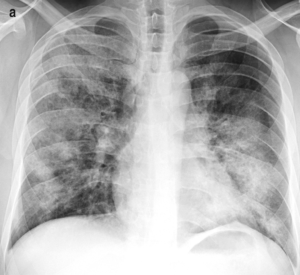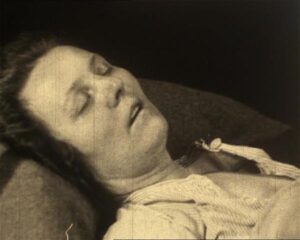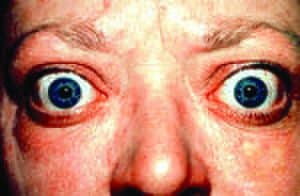Delayed sleep phase syndrome (DSPS) is a condition in which a person’s sleep is delayed by two hours or more over what is regarded to be an appropriate or normal bedtime. The inability to wake up at the targeted time is further exacerbated by the sleep delay. For instance, a person with DSPS may fall asleep at 2 a.m. instead of 10 p.m., and then have difficulties waking up for school or work in the morning.
Symptoms of delayed sleep phase syndrome
Among the symptoms of delayed sleep phase syndrome are:
Inability to fall asleep when wanted: This typically manifests as complains of sleeplessness. It may be exacerbated by the social pressures adolescents experience to stay up late (homework, internet or cell phone use).
Inability to wake up when wanted and excessive daytime drowsiness: This is typically the most prevalent complaint since it is more obvious than nocturnal insomnia. Children and adolescents with DSPS frequently feel excessive daytime drowsiness, at least during the week, as a result of insufficient sleep. This is due to the delay in falling asleep and the requirement to rise at the appropriate time for work or school.
Individuals who are permitted to follow their preferred sleep/wake pattern seldom experience sleep issues: Children and adolescents with DSPS, if unaccompanied by other sleep disorders, sleep through the night with few or no awakenings. They just suffer from an internal clock or sleep-wake cycle change. When there is no need to wake up at a specific hour, children and adolescents with DSPS typically sleep well during vacations and school holidays. Sleep maintenance is not an issue.
Depression and conduct issues: As a result of daytime sleepiness and school absence, children and adolescents with DSPS may develop sadness and other mental disorders, including behavioral difficulties. Daytime sleepiness can also result in a decline in academic performance due to missed school days, tardiness, and lack of focus. There may also be dependence on coffee, sedatives, or alcohol.

Mechanism
DSPS is a dysfunction of the time system of the body, or the biological clock. Individuals with DSPS may have an exceptionally lengthy circadian cycle, a diminished sensitivity to the resetting impact of daylight on the body clock, and/or an exaggerated response to the delaying effects of evening light and an inadequate response to the advancing effects of light in the morning. In support of the enhanced sensitivity to evening light theory, it has been reported that the percentage of melatonin suppression by a strong light stimulation of 1,000 lux provided 2 hours before the melatonin peak is larger in 15 DSPS patients than in 15 controls.
The altered phase connection between the timing of sleep and the circadian rhythm of body core temperature in DSPS patients evaluated under entrained settings has been documented earlier. The fact that this change was also detected in temporal isolation (i.e., in the absence of any external time signals) lends credence to the theory that the cause of DSPS extends beyond a diminished capacity to attain and maintain the proper phase connection between sleep timing and the 24-hour day. Rather, the disease may potentially indicate a basic difficulty of the endogenous circadian timing system to maintain appropriate internal phase connections across physiological systems and to change these internal relationships within the 24-hour day. In normal subjects, the phase relationship between sleep and temperature changes in temporal isolation relative to that observed under entrained conditions: in isolation, temperature minimum tends to occur at the beginning of sleep, whereas under entrained conditions, it occurs at the end of the sleep period—a change in phase angle of several hours; DSPS patients may have a diminished capacity to achieve such a change in phase angle in response to etiology.
Even when bedtimes and waking times are self-selected, the quality of sleep in DSPD may be significantly worse to that of normal persons as a result of these changed internal phase correlations. A patient with DSPD had an average sleep onset delay that was twice as long as that of the three control individuals and almost twice as much waking after sleep onset (WASO) as the control subjects, resulting in considerably less efficient sleep. In addition, the timing of slow wave sleep was dramatically changed in the DSPS patient. In addition to impaired circadian clock function, this discovery may imply that DSPS is also characterized by alterations in the homeostatic control of sleep. In particular, the rate of Process S depletion during sleep may be delayed. This might perhaps contribute to the severe sleep inertia experienced by DSPS patients upon waking. Due to the changed phase angle between sleep and temperature found in DSPS and the propensity for extended sleep times, it has been postulated that these individuals may just sleep through the phase-advance section of the light PRC. Although the number of DSPD patients investigated was very small, these findings appear to refute the concept that DSPD is only a malfunction of sleep scheduling and not a disorder of the sleep system itself.
Diagnosis
Your doctor may evaluate your family and medical history and do a physical examination to determine your problem.
Your doctor may prescribe a number of diagnostic tests to diagnose your disease or any linked conditions, including:
Actigraphy: This test requires you to wear a tiny gadget that monitors your sleep-wake patterns at home.
Sleep journal: Your doctor may request that you maintain a sleep diary in which you record your daily sleep and wake periods in order to demonstrate your sleep pattern.
Polysomnogram: Your physician may prescribe a polysomnogram if he or she feels you have a different sleep condition. At this exam, you will spend the night in a sleep facility. A polysomnogram examines your sleep-related brain activity, heart rate, oxygen levels, eye movements, and breathing.
Treatment
The objective of therapy is to adjust your sleep routine to an earlier period and maintain it. A sleep specialist can assist you in gradually adjusting your bedtime and wake time until you achieve a regular sleep routine. The term for this is chronotherapy. To ensure that the new sleep-wake cycle schedule is effective, you must closely adhere to it. Other therapeutic options include taking melatonin and/or exposing oneself to bright light upon rising in the early morning.
Melatonin is a common over-the-counter treatment for insomnia. Melatonin can induce drowsiness at night to shorten the time it takes to fall asleep. You may use melatonin to modify your circadian rhythm to the desired time by ingesting it and shifting your sleep schedule. However, you should examine the dosage and timing of melatonin administration with your sleep expert or physician. If you do not take melatonin at the proper time, it might cause your body clock to be further delayed.
It is crucial to remember that the blue light emitted by computer displays might reduce your natural melatonin levels and prevent you from feeling as drowsy at night. Therefore, you should avoid using your computer and other electronic devices one hour before night, and alter their settings to reduce the amount of blue light they generate. Additionally, you should avoid strong light in the evening.
The timing of light treatment to enhance your circadian rhythm is crucial. Light treatment entails exposing oneself to morning light, either through natural sunlight or a specially built light box. This is often done for around an hour after awakening, when the core body temperature has reached its peak. If performed before this rise in core body temperature, it might further delay the body clock. It is crucial that your bedtime and wake-up time be as consistent as possible. Try not to have a significant discrepancy between your workday and weekend schedules (no more than 2 hours).



